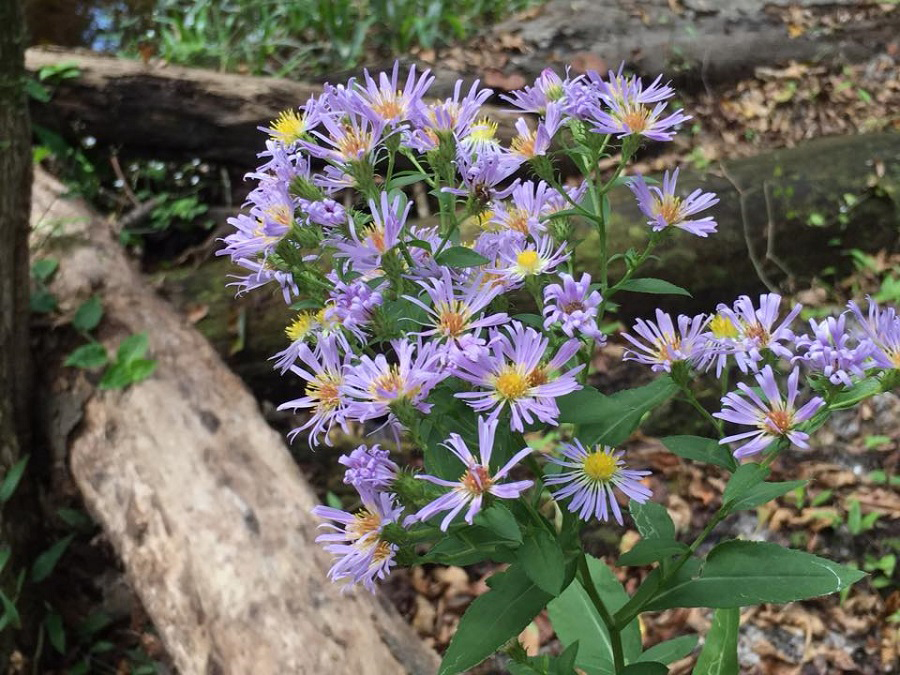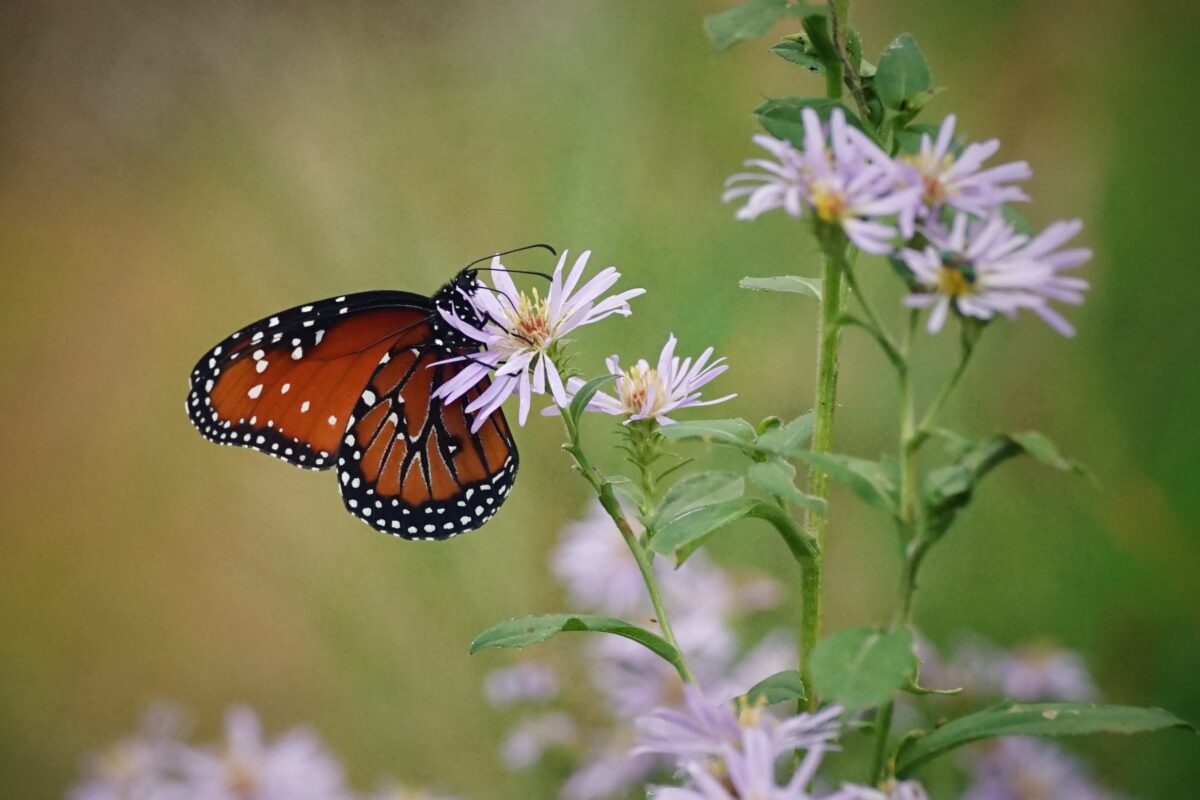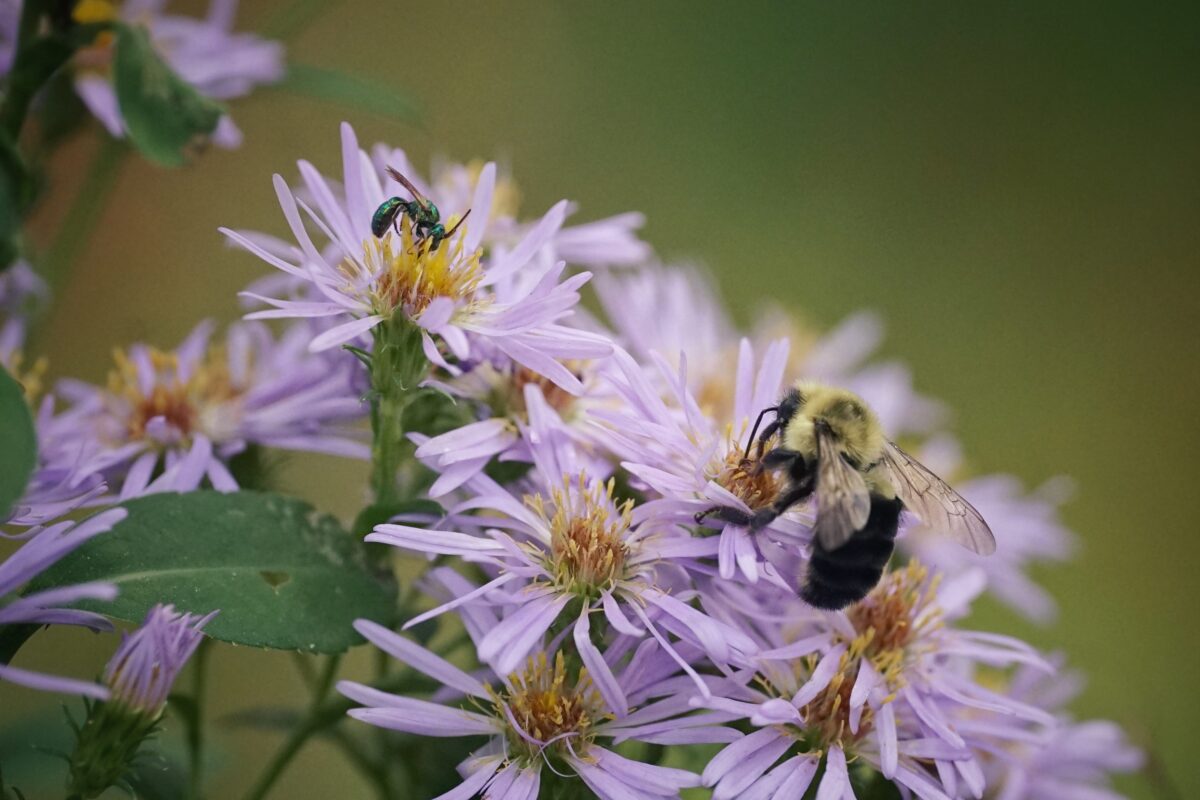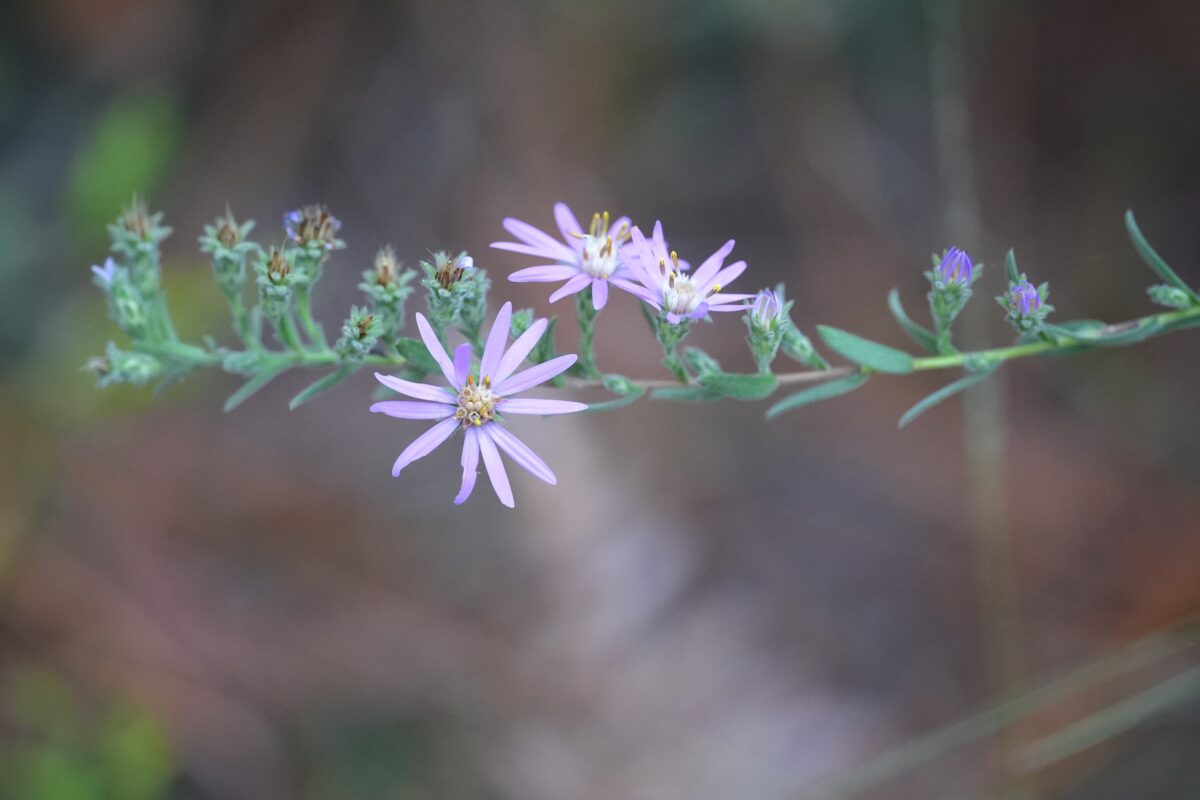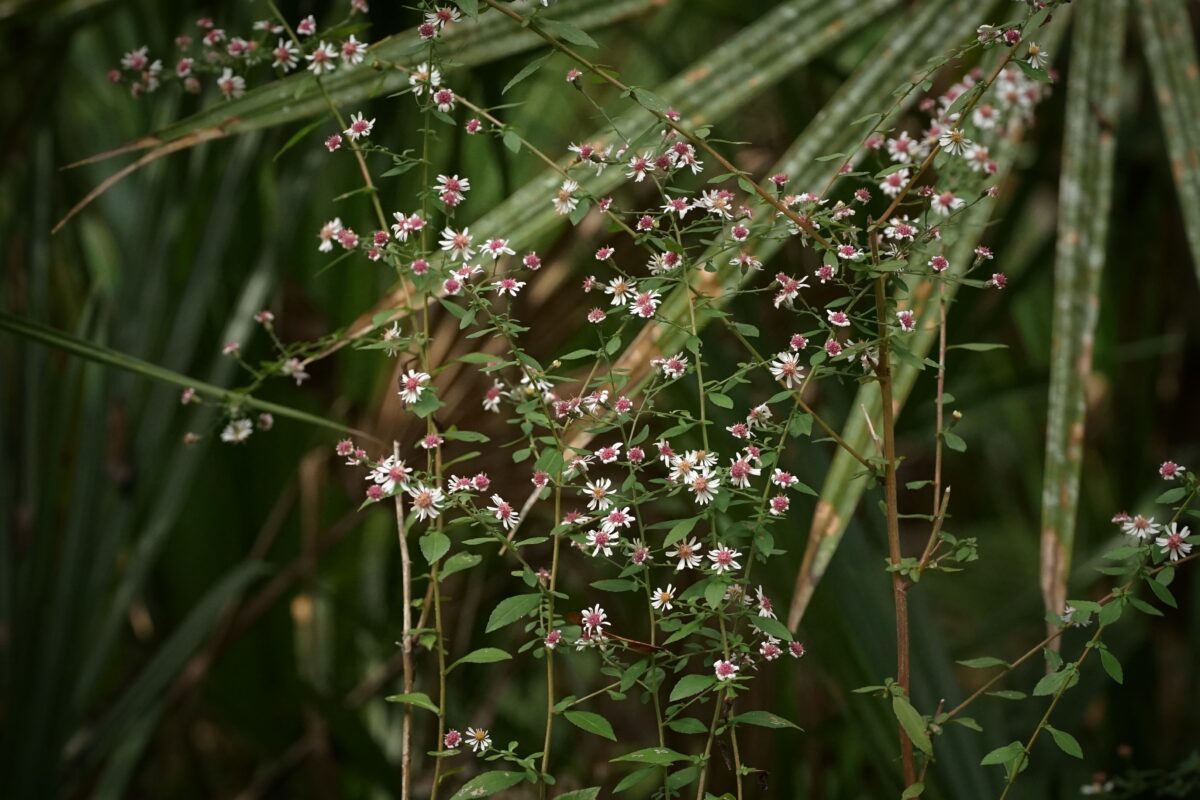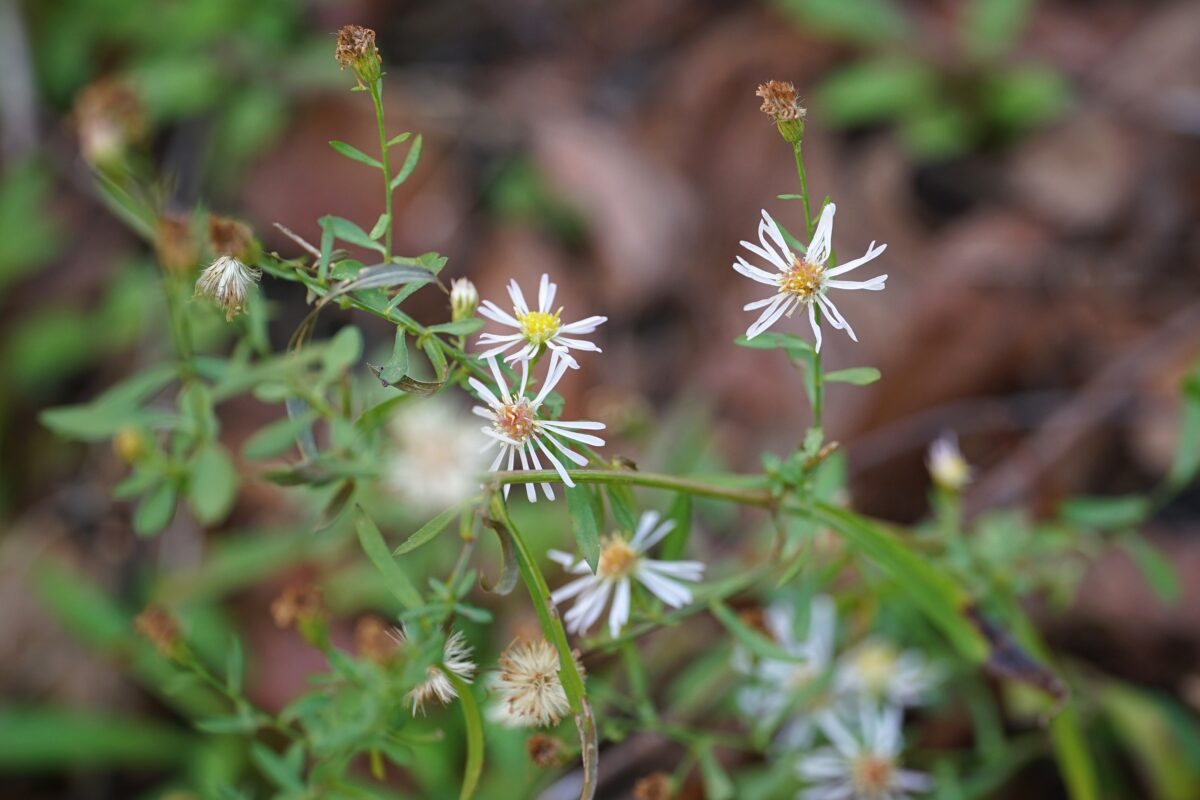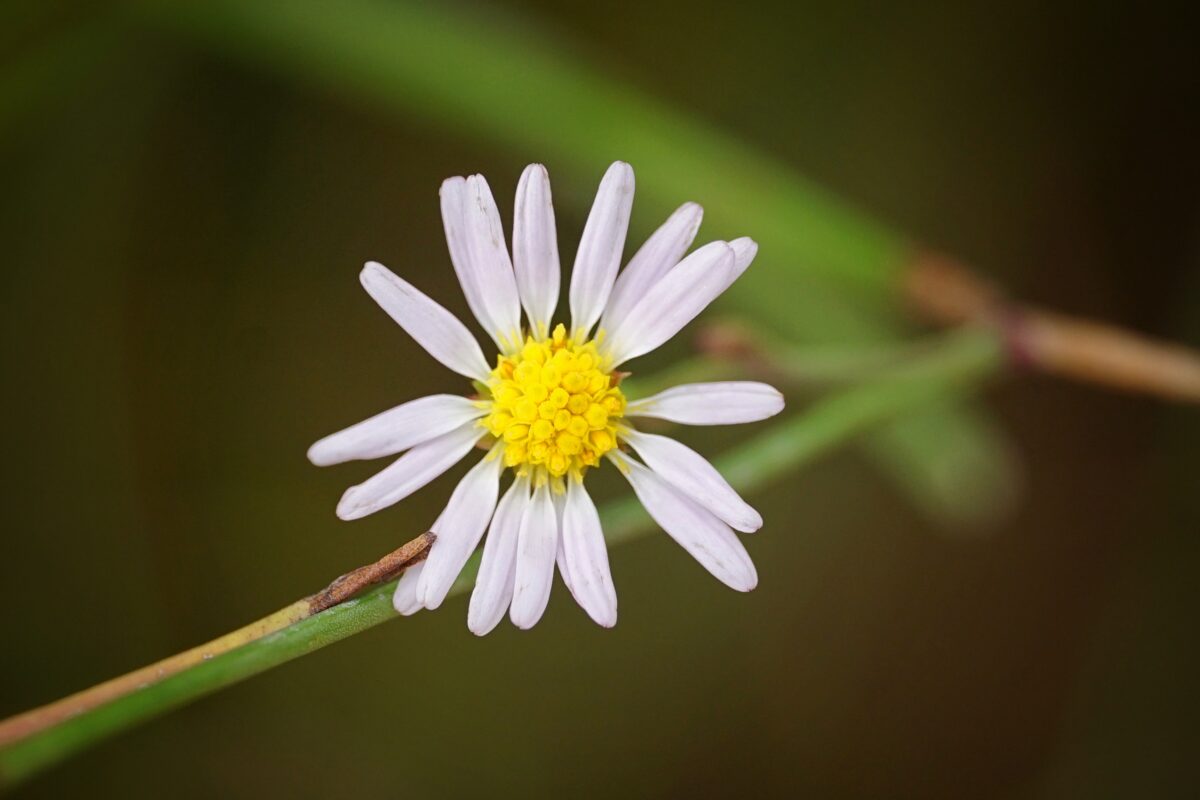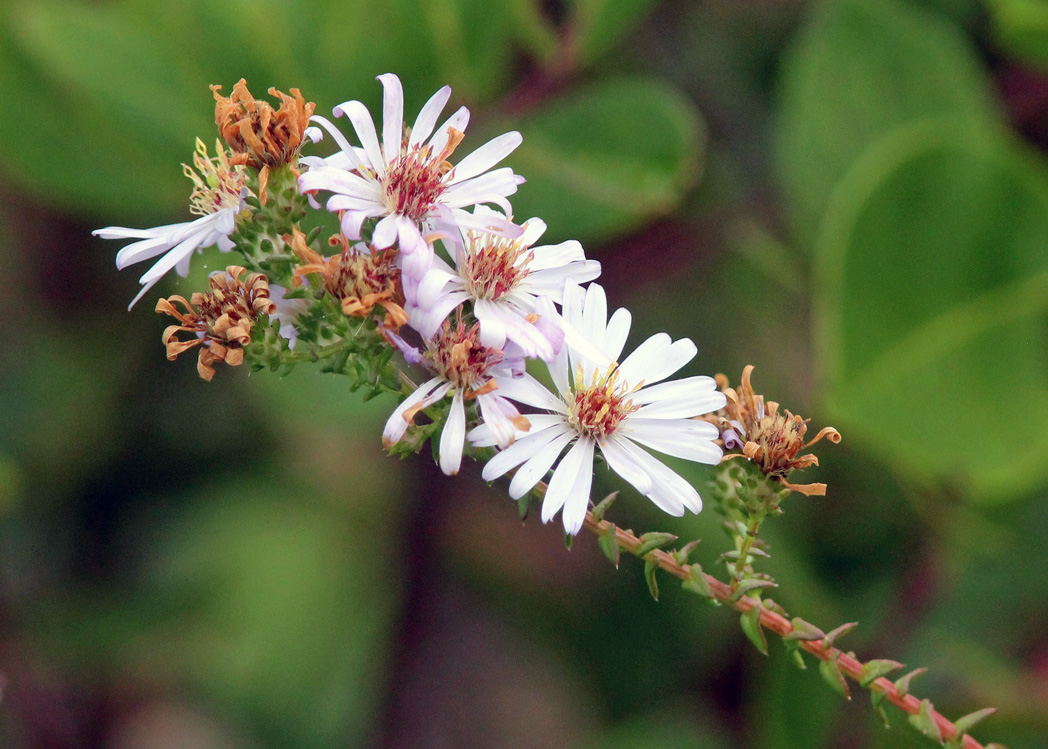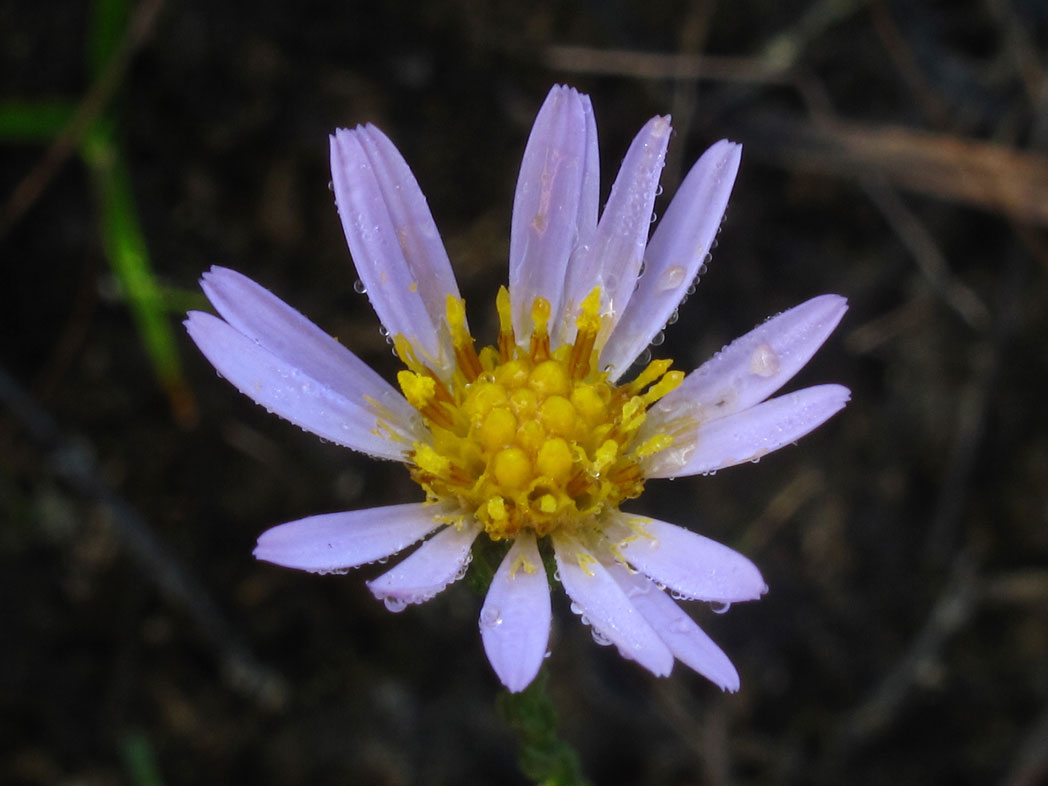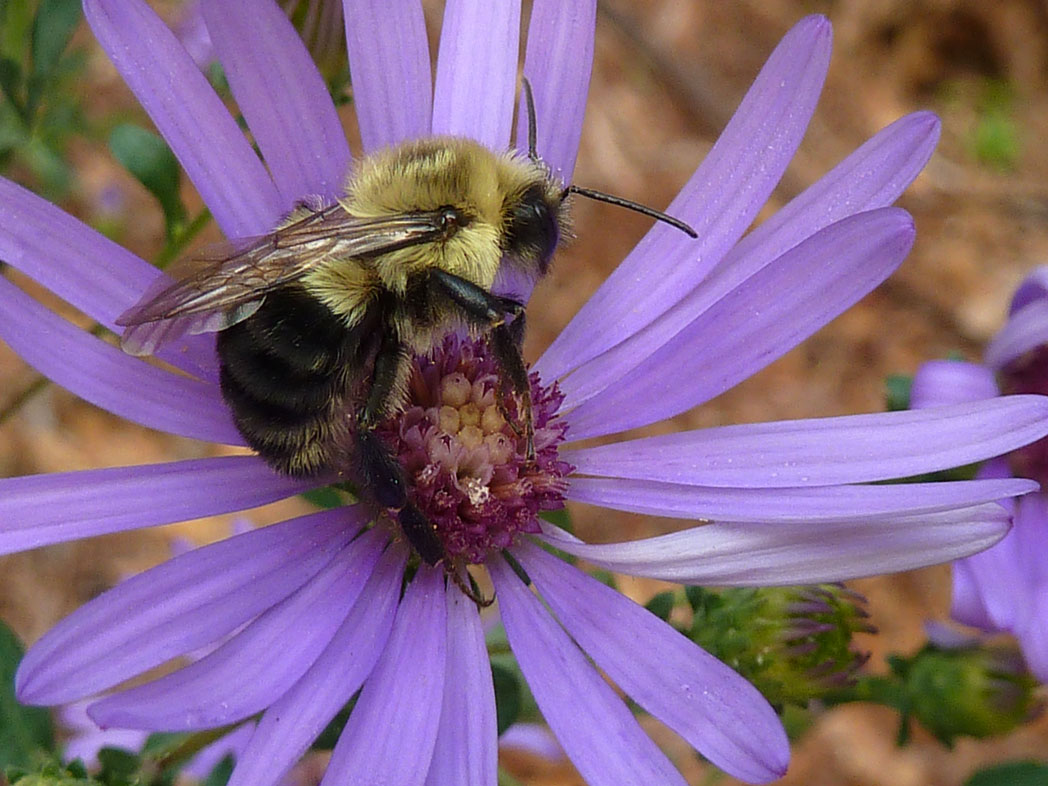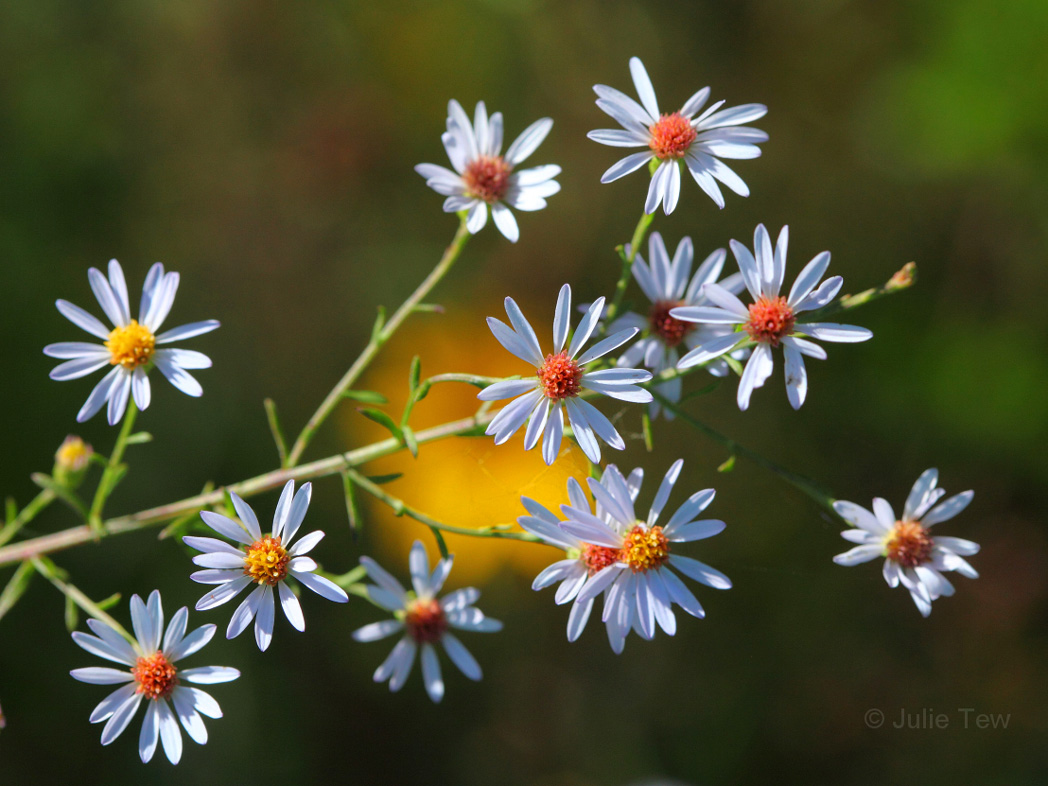Elliott’s aster
Pictured above: Elliott’s aster (Symphyotrichum elliottii) by Lisa Roberts. Click on terms for botanical definitions. View post as a PDF.
In late fall, the abundant purple tufts of Elliot’s aster (Symphyotrichum elliottii) appear, almost like lavender cotton candy, adorning roadsides and natural areas. Occurring naturally in ditches, wet flatwoods, swamps and marshes, it is a wonderful plant for attracting butterflies, bees and other pollinators due to its many fragrant blooms.
Elliott’s aster is an herbaceous perennial wildflower that produces a coronet of blooms. Its compound flowers consist of many lavender ray florets surrounding yellow disk florets. Leaves are linear to lanceolate with finely serrated margins. They are alternately arranged.
There are 25 native species of Symphyotrichum in Florida, a number of which can be difficult to tell apart. Elliott’s aster is relatively distinct however in its tall growth habit, tendency to form dense stands, and robust flowering.
Family: Asteraceae (Aster, daisy or composite family)
Native range: Nearly throughout Florida, except western Panhandle
To see where natural populations of Elliott’s aster have been vouchered, visit florida.plantatlas.usf.edu.
Lifespan: Perennial
Soil: Moist, sandy, loamy or clay soils
Exposure: Full sun
Growth habit: 4 feet+ tall
Propagation: Seed, division
Florida regions of landscape suitability: North, Central, South
Garden tips: Elliott’s aster works well in moist and wetland gardens and in containers. If planted in shady areas, it tends to lean or fall over, so plant in full sun for best results. Note however that this plant suckers aggressively, so care should be taken when incorporating it in the home landscape as it may require some control if it spreads beyond where it is desired.
Elliot’s aster is available from nurseries that specialize in Florida native plants. Visit PlantRealFlorida.org to find a nursery in your area.
Learn more about Elliot’s aster from the Florida Native Plant Society and the Institute for Regional Conservation.
For information on other Symphyotrichum species, see these resources:

